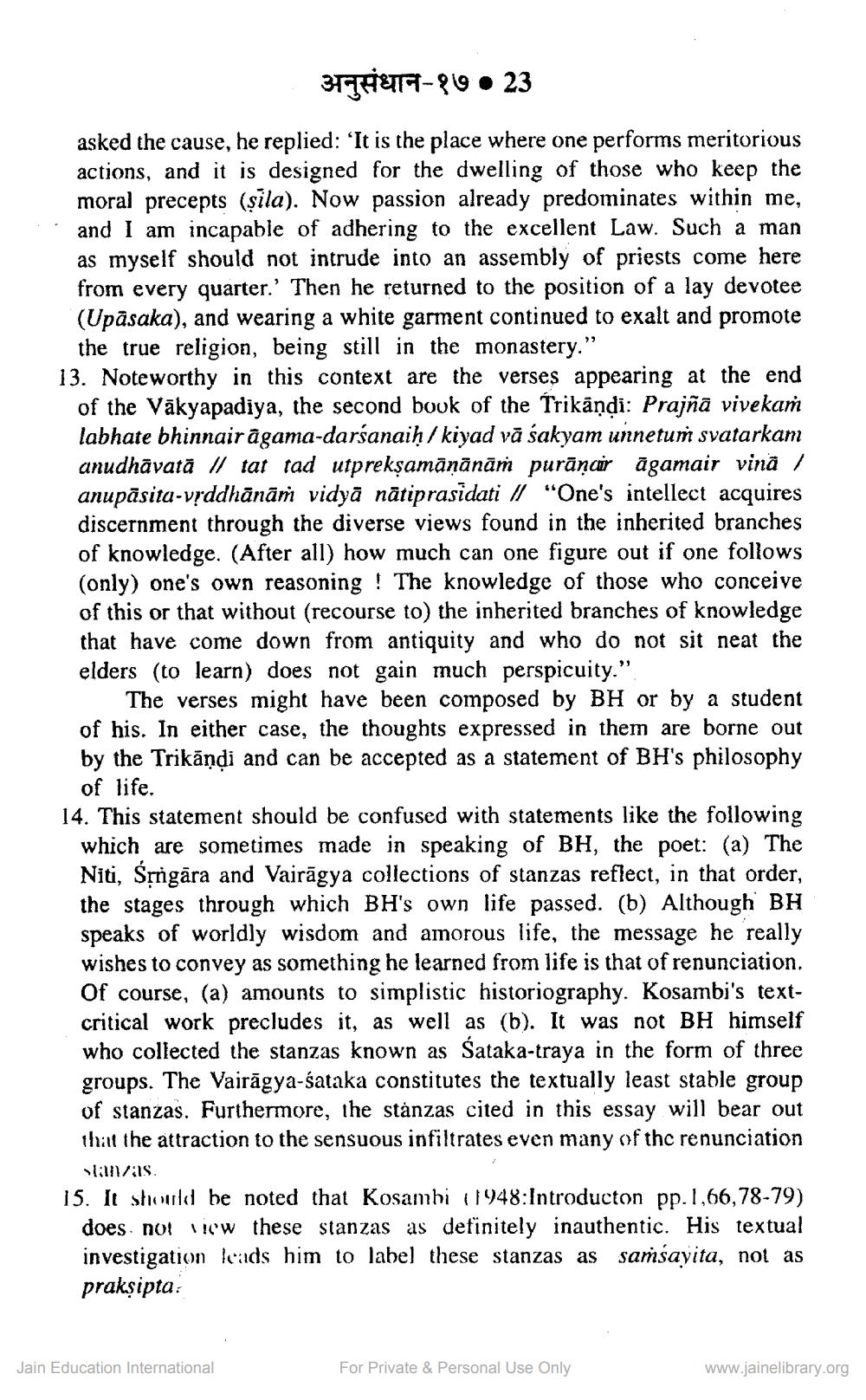________________
अनुसंधान - १७•23
asked the cause, he replied: 'It is the place where one performs meritorious actions, and it is designed for the dwelling of those who keep the moral precepts (şila). Now passion already predominates within me, and I am incapable of adhering to the excellent Law. Such a man as myself should not intrude into an assembly of priests come here from every quarter.' Then he returned to the position of a lay devotee (Upāsaka), and wearing a white garment continued to exalt and promote the true religion, being still in the monastery."
13. Noteworthy in this context are the verses appearing at the end of the Vakyapadiya, the second book of the Trikāṇḍi: Prajñā vivekaṁ labhate bhinnair āgama-darśanaiḥ/ kiyad vā śakyam unnetum svatarkam anudhāvatā // tat tad utprekṣamāṇānāṁ purāṇar āgamair vină / anupāsita-vṛddhānāṁ vidyā nātiprasidati // "One's intellect acquires discernment through the diverse views found in the inherited branches of knowledge. (After all) how much can one figure out if one follows (only) one's own reasoning! The knowledge of those who conceive of this or that without (recourse to) the inherited branches of knowledge that have come down from antiquity and who do not sit neat the elders (to learn) does not gain much perspicuity."
The verses might have been composed by BH or by a student of his. In either case, the thoughts expressed in them are borne out by the Trikāṇḍi and can be accepted as a statement of BH's philosophy of life.
14. This statement should be confused with statements like the following which are sometimes made in speaking of BH, the poet: (a) The Niti, Śṛngāra and Vairagya collections of stanzas reflect, in that order, the stages through which BH's own life passed. (b) Although BH speaks of worldly wisdom and amorous life, the message he really wishes to convey as something he learned from life is that of renunciation. Of course, (a) amounts to simplistic historiography. Kosambi's textcritical work precludes it, as well as (b). It was not BH himself who collected the stanzas known as Śataka-traya in the form of three groups. The Vairagya-śataka constitutes the textually least stable group of stanzas. Furthermore, the stanzas cited in this essay will bear out that the attraction to the sensuous infiltrates even many of the renunciation
stanzas.
15. It should be noted that Kosambi (1948:Introducton pp.1,66,78-79) does not view these stanzas as definitely inauthentic. His textual investigation leads him to label these stanzas as samśayita, not as prakṣipta
Jain Education International
For Private & Personal Use Only
www.jainelibrary.org




